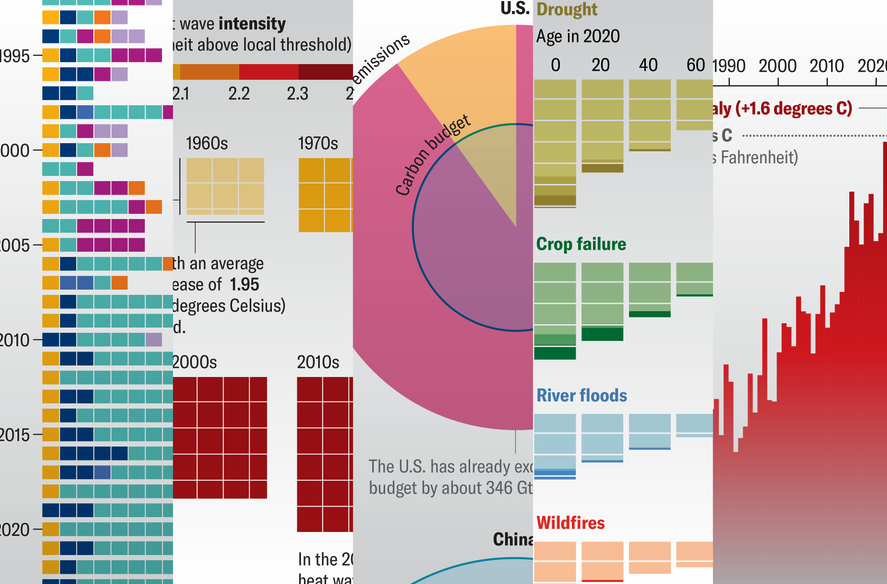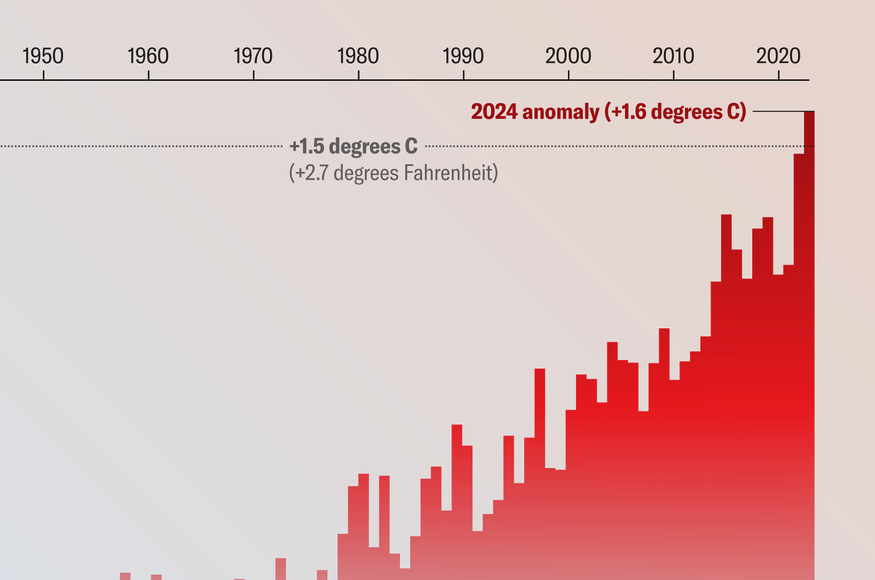He corresponded with many high profile scientists and scholars ͏ ͏ ͏ ͏ ͏ ͏ ͏ ͏ ͏ ͏ ͏ ͏ ͏ ͏ ͏ ͏ ͏ ͏ ͏ ͏ ͏ ͏ ͏ ͏ ͏ ͏ ͏ ͏ ͏ ͏ ͏ ͏ ͏ ͏ ͏ ͏ ͏ ͏ ͏ ͏ ͏ ͏ ͏ ͏ ͏ ͏ ͏ ͏ ͏ ͏ ͏ ͏ ͏ ͏ ͏ ͏ ͏ ͏ ͏ ͏ ͏ ͏ ͏ ͏ ͏ ͏ ͏ ͏ ͏ ͏ ͏ ͏ ͏ ͏ ͏ ͏ ͏ ͏ ͏ ͏ ͏ ͏ ͏ ͏ ͏ ͏ ͏ ͏ ͏ ͏ ͏ ͏ ͏ ͏ ͏ ͏ ͏ ͏ ͏ ͏ ͏ ͏ ͏ ͏ ͏ ͏ ͏ ͏ ͏ ͏ ͏ ͏ ͏ ͏ ͏ ͏ ͏ ͏ ͏ ͏ ͏ ͏ ͏ ͏ ͏ ͏ ͏ ͏ ͏ ͏ ͏ ͏ ͏ ͏ ͏ ͏ ͏ ͏ ͏ ͏ ͏ ͏ ͏ ͏ ͏ ͏ ͏ ͏ ͏ ͏
November 13, 2025—Will bird flu affect Thanksgiving turkeys? Plus, climate action since the Paris Agreement and new clues to the CIA Kryptos puzzle. —Andrea Gawrylewski, Chief Newsletter Editor | | A "proof-of-concept" copper plate for the Kryptos sculpture that is up for auction. RR Auction | | Nearly 2 million turkeys have recently died from bird flu. With Thanksgiving approaching, people may worry about the fate of holiday feasts. Agricultural economist Jada Thompson doesn't expect Turkey prices to soar for a number of reasons: One is that, due to a lack of USDA data, she's unsure whether the turkeys that were infected are ones that would have been sold whole during Thanksgiving. The second is the timing. Thanksgiving turkeys are typically harvested from July to September, so they may have missed peak infection season.
Other impacts: Even if turkey supply is sound, it's possible that other parts of our food systems may be impacted by bird flu, says Thompson, such as egg prices. Demand for eggs tends to peak between Thanksgiving and the New Year, and unlike turkeys, eggs can't be frozen months in advance. Though it's too early to tell whether bird flu will cause egg prices to soar in the coming months like last year, Thompson says the possibility still concerns her.
What the experts say: Turkey prices are unlikely to spike, according to Thompson. But "it's not just today's impact," she says. "It is also about what that supply chain will look like moving forward." —Andrea Tamayo, Newsletter Writer
| | | 10 Years of Climate Action | Next month marks a decade since a landmark global climate agreement was hammered out in Paris. I can still remember the jubilation after years and years of failed attempts and disappointed hopes. The Paris Agreement seemed to signal that the world was, finally, ready to start cutting the greenhouse gas emissions that for more than a century have been heating up the planet. In the 10 years since, reality has fallen far short of the promise of that moment. But progress has been made. The countries gathered in Brazil this and next week for the COP 30 climate meeting will be negotiating whether and how to ramp up emissions-cutting actions and provide financial support for developing countries to adapt to climate change and develop renewable energy (the U.S. is notably absent). What has been done: Progress has been made since 2015, especially in terms of our future exposure to extreme heat. Without the Paris agreement, we'd be facing 4 degrees Celsius of warming and 114 more days of the most extreme heat every year, a new study finds. With it, that warming is closer to 2.6 degrees C and the number of days of extreme heat is slashed in half. What the experts say: These seem like modest achievements, but "every fraction of a degree of warming—whether it is 1.4, 1.5, or 1.7°C—will mean the difference between safety and suffering for millions of people," says Friederike Otto, a climate scientist at Imperial College London and a co-author of the recent study. —Andrea Thompson, Senior Life Sciences Desk Editor
Read More: | |  | Why The Paris Agreement Matters, in 5 Graphics | 5 min read |  | Earth Surpasses 1.5 Degrees C in Hottest Year on Record | 3 min read | | | | | |
Art Meets Science in a New Documentary From PBS | | Art & Science Collide reveals collaborations between the artists and scientists who participated in the Getty's PST ART project. The film addresses some of humanity's most urgent threats from climate change to space exploration. Watch now on the free PBS App. | | | | |
- Environmental-humanities researcher Jenia Mukherjee (right) studies the complex relationship between people, canals and wetlands in Kolkata, India. The wetlands—including the sewage-fed pond she stands in here—treat nearly 80 percent of the city's waste water naturally, but face threats of urbanization as the area's population continues to grow. In her research field, "there has long been a disconnect between natural science, engineering and social science," she says. Researchers need to combine perspectives to gain a holistic picture of wetlands, "otherwise these ponds will continue to be degraded." Nature | 3 min read
| | - Reader Tom Shockey of St. Charles, Illinois, saw this glowing aurora as he was arriving home last night. He snapped this photo with his iPhone.
| | Thank you to the many readers who have sent your awesome Northern Lights photos to me! I'll share more in this newsletter in the coming days. Alas, New York was cloud-covered last night, so once again I missed my chance to see my first auroras. So I'll be living on your submissions for now. | | —Andrea Gawrylewski, Chief Newsletter Editor
| | | | |
Subscribe to this and all of our newsletters here. | | | | |

